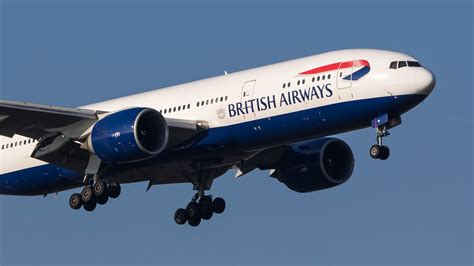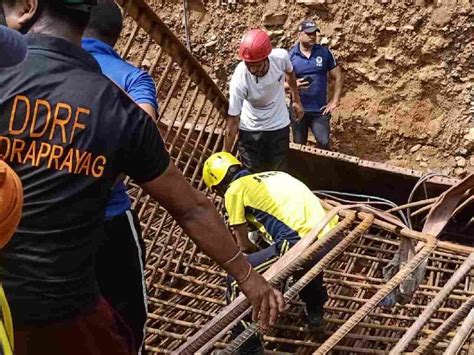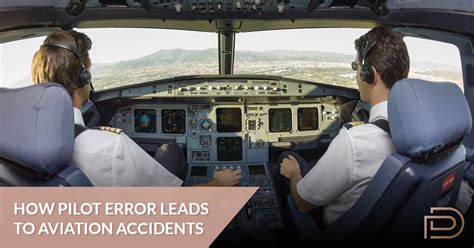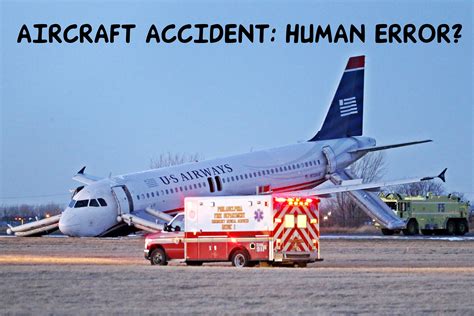
A British Airways flight bound for India was forced to return to London Heathrow Airport shortly after takeoff on Thursday due to a technical malfunction, leaving 214 passengers onboard facing significant delays and disruptions to their travel plans.
British Airways flight BA143, en route to Bengaluru, India, experienced a technical issue shortly after departing from Heathrow. The Boeing 787-9 Dreamliner was compelled to turn back, landing safely at its origin airport, according to a British Airways spokesperson. “The flight returned to Heathrow as a precaution due to a minor technical issue,” the airline stated. “The safety of our customers and crew is always our top priority, and we apologize to our customers for the delay to their journey.”
Passengers reported that the return to Heathrow was unexpected, with many expressing frustration over the lack of immediate information regarding the nature of the technical problem and the subsequent rescheduling of their flight. Initial reports suggest that the technical issue involved a problem with one of the aircraft’s systems, triggering the precautionary return.
British Airways has confirmed that all 214 passengers were safely disembarked and provided with accommodation and meals while awaiting a replacement flight. The airline is working to minimize further disruption and has scheduled a new flight for Friday, although specific timing has not yet been disclosed.
The incident highlights the complexities and potential disruptions inherent in air travel, particularly on long-haul routes. Technical issues, while often minor, can necessitate immediate returns or diversions, impacting passenger schedules and airline operations.
Details of the Incident
Flight BA143, operated by a Boeing 787-9 Dreamliner, took off from London Heathrow on Thursday afternoon, heading towards Bengaluru, a major tech hub in India. Shortly after departure, the pilots detected a technical anomaly that warranted an immediate return to Heathrow. Standard operating procedures dictate that in such cases, the crew must prioritize safety above all else, leading to the decision to turn back.
The nature of the technical issue has not been officially disclosed in detail by British Airways, but sources suggest it relates to a hydraulic system malfunction or an irregularity detected in one of the aircraft’s critical control systems. Pilots are trained to handle a range of technical problems, and the decision to return indicates that the issue required immediate attention and could not be safely addressed mid-flight.
Upon landing back at Heathrow, the aircraft was immediately attended to by maintenance crews. Passengers were kept onboard for a short period before being disembarked and directed to airport facilities. British Airways staff provided passengers with updates, albeit limited, and arranged for hotel accommodations and meals for the stranded travelers.
Passenger Experiences
Passengers on flight BA143 expressed a range of emotions, from initial confusion to frustration and eventual resignation. Many passengers were business travelers with critical meetings scheduled in Bengaluru, while others were tourists or individuals returning home after visiting the UK. The unexpected delay threw their plans into disarray.
Some passengers took to social media to voice their concerns and share updates. One passenger tweeted, “Stuck on BA143 back at Heathrow. No clear info on what happened. Supposed to be in Bangalore tonight.” Another passenger expressed frustration over the lack of communication, stating, “British Airways could do a better job keeping us informed. We’re all just waiting with no idea what’s going on.”
British Airways acknowledged the inconvenience caused to passengers and reiterated its commitment to ensuring their safety and comfort. The airline’s spokesperson stated, “We understand the frustration this has caused and are doing everything we can to get our customers to Bengaluru as quickly as possible.”
Impact on British Airways Operations
The return of flight BA143 has had a ripple effect on British Airways’ operations. The Boeing 787-9 Dreamliner is a vital component of the airline’s long-haul fleet, and its temporary grounding for inspection and repair has necessitated adjustments to the flight schedule. British Airways has had to reallocate aircraft and crew to cover the affected route, potentially leading to delays and cancellations on other flights.
The incident also underscores the importance of robust maintenance and safety protocols in the aviation industry. Airlines invest heavily in maintaining their fleets and training their crews to respond effectively to technical issues. Incidents like this serve as a reminder of the potential risks involved in air travel and the critical role that safety measures play in mitigating those risks.
Boeing 787-9 Dreamliner
The Boeing 787-9 Dreamliner is a long-range, wide-body jet airliner developed and manufactured by Boeing Commercial Airplanes. It is a stretched version of the 787-8 and entered service in 2014. The 787-9 is known for its fuel efficiency, advanced technology, and passenger comfort. It can carry approximately 290 passengers in a typical three-class configuration and has a range of about 7,635 nautical miles (14,140 km).
The Dreamliner incorporates several innovative features, including a composite fuselage and wings, which reduce weight and improve fuel efficiency. It also features advanced engine technology, improved aerodynamics, and an enhanced cabin environment with higher humidity and lower cabin altitude, designed to reduce jet lag and improve passenger comfort.
The 787 family has been generally reliable, but has experienced some technical issues over the years, including battery problems in the early years of the 787-8. However, Boeing has addressed many of these issues through design modifications and improved maintenance procedures.
Aviation Safety and Technical Issues
Aviation safety is paramount in the airline industry, and airlines are required to adhere to strict safety regulations and maintenance standards. Technical issues can arise for a variety of reasons, including component failures, manufacturing defects, and environmental factors. When a technical issue is detected, pilots and maintenance crews must follow established procedures to assess the problem and take appropriate action.
In some cases, a technical issue may necessitate an immediate return to the airport of origin or a diversion to an alternate airport. The decision to return or divert is typically based on a combination of factors, including the severity of the problem, the availability of suitable airports, and the weather conditions.
Airlines have comprehensive maintenance programs in place to prevent and address technical issues. These programs include regular inspections, preventive maintenance, and component replacements. Maintenance crews use sophisticated diagnostic tools and techniques to identify potential problems and ensure that aircraft are in safe operating condition.
Compensation and Passenger Rights
Passengers whose flights are delayed or canceled due to technical issues may be entitled to compensation and assistance under various regulations, such as the European Union’s Regulation (EC) No 261/2004 and similar laws in other jurisdictions. These regulations typically provide for compensation for delays exceeding a certain threshold, as well as assistance with meals, accommodation, and rebooking.
The amount of compensation depends on the length of the delay and the distance of the flight. Passengers may also be entitled to a refund of their ticket if the flight is canceled and they choose not to travel on an alternative flight.
Airlines are required to inform passengers of their rights and provide them with assistance in the event of a delay or cancellation. Passengers who believe they are entitled to compensation should contact the airline directly or consult with a consumer protection agency.
Past Incidents Involving British Airways Flights
British Airways, like any major airline, has experienced its share of incidents and accidents over the years. While most of these incidents have been minor and have not resulted in serious injuries, they serve as a reminder of the potential risks involved in air travel.
In 2008, a British Airways Boeing 777 crash-landed at Heathrow Airport after experiencing a loss of power in both engines. The incident was attributed to ice crystals in the fuel. All 152 passengers and crew members survived the crash.
In 2015, a British Airways Airbus A319 experienced an engine fire shortly after takeoff from Heathrow Airport. The pilots safely returned the aircraft to the airport, and all passengers and crew members were evacuated without injuries.
These incidents highlight the importance of ongoing safety improvements and the need for airlines to remain vigilant in preventing and mitigating risks.
Long-Haul Flights and Technical Challenges
Long-haul flights present unique technical challenges due to the extended duration of the flight and the increased demands placed on aircraft systems. Aircraft flying long distances are subject to greater wear and tear, and are more likely to encounter adverse weather conditions.
Airlines operating long-haul flights must have robust maintenance programs in place to ensure that their aircraft are in safe operating condition. They must also have well-trained crews who are capable of handling a wide range of technical issues.
The return of flight BA143 underscores the importance of prioritizing safety above all else, even if it means disrupting passenger schedules. Airlines must be prepared to respond effectively to technical issues and provide passengers with assistance and information in a timely manner.
Future of Air Travel and Technology
The aviation industry is constantly evolving, with new technologies and innovations being introduced to improve safety, efficiency, and passenger comfort. Advances in aircraft design, engine technology, and air traffic management are helping to make air travel safer and more reliable.
For example, new composite materials are being used to build lighter and more fuel-efficient aircraft. Advanced engine technologies are reducing fuel consumption and emissions. And sophisticated air traffic management systems are helping to reduce delays and improve the flow of air traffic.
As technology continues to advance, air travel is likely to become even safer, more efficient, and more comfortable. However, it is important to remember that technical issues can still arise, and airlines must remain vigilant in maintaining their aircraft and training their crews.
Analysis of the Incident
The return of British Airways flight BA143 to Heathrow Airport highlights the inherent complexities and potential challenges of modern air travel. While the exact nature of the technical issue remains undisclosed beyond the airline’s “minor technical issue” description, the decision to return to the origin airport underscores the airline’s commitment to safety. This decision is made after careful assessment by the flight crew, often in consultation with ground-based engineering and operational support teams. Several factors likely played a role in the decision-making process:
- Severity of the Issue: Even if the technical problem appeared initially to be minor, the potential for it to escalate during a long-haul flight would have been carefully considered. A seemingly minor issue might affect other aircraft systems over time, particularly those that are interdependent.
- Proximity to a Maintenance Hub: Heathrow Airport is a major hub for British Airways and provides immediate access to extensive maintenance facilities, spare parts, and specialized technicians. Returning to Heathrow ensures that the aircraft can be thoroughly inspected and repaired quickly.
- Availability of Resources: Heathrow also offers immediate access to alternative aircraft, ground support equipment, and crew, facilitating a smoother transition for passengers while the affected aircraft is being examined.
- Regulatory Compliance: Airlines are bound by stringent safety regulations and operational procedures that require them to prioritize passenger safety. Any deviation from normal operating parameters mandates a careful assessment and adherence to established protocols.
The incident also sheds light on the challenges airlines face in managing passenger expectations and disseminating information during disruptions. In the age of social media, passengers expect real-time updates and transparency. The reported frustrations of passengers on flight BA143 regarding the lack of immediate information indicate a need for airlines to enhance their communication strategies during such events. Clear, concise, and timely updates are crucial for maintaining passenger trust and mitigating anxiety.
Moreover, the financial impact of such incidents on airlines can be substantial. In addition to the direct costs of maintenance and repairs, airlines face expenses related to passenger accommodation, meals, and rebooking. The potential for reputational damage and loss of customer loyalty further underscores the need for airlines to handle such situations with utmost care and professionalism.
From a broader perspective, the incident serves as a reminder of the importance of continuous investment in aviation safety and infrastructure. Airlines, manufacturers, and regulatory authorities must work collaboratively to identify and address potential risks, improve maintenance practices, and enhance safety procedures. The ultimate goal is to ensure that air travel remains the safest mode of transportation, despite the inherent challenges and complexities involved.
The Boeing 787-9 Dreamliner, despite its advanced technology and numerous safety features, is not immune to technical issues. Like all aircraft, it requires regular maintenance and inspections to ensure optimal performance and safety. The incident involving flight BA143 underscores the importance of these maintenance procedures and the need for airlines to remain vigilant in detecting and addressing potential problems.
In conclusion, the return of British Airways flight BA143 to Heathrow Airport due to a technical issue highlights the complexities and challenges of modern air travel. While the incident caused disruption and frustration for passengers, it also demonstrates the airline’s commitment to safety and the importance of robust maintenance and operational procedures. As the aviation industry continues to evolve, it is crucial for airlines, manufacturers, and regulatory authorities to work together to enhance safety, improve communication, and minimize disruptions for passengers.
FAQ
-
What caused British Airways flight BA143 to return to Heathrow?
The flight returned to Heathrow due to a technical issue shortly after takeoff. British Airways described it as a “minor technical issue,” but specific details were not immediately disclosed. Sources suggest it could relate to a hydraulic system malfunction or irregularity detected in one of the aircraft’s critical control systems.
-
Were passengers on board safe?
Yes, all 214 passengers and crew members were safe. The aircraft landed safely back at Heathrow Airport, and passengers were disembarked without any injuries.
-
What happened to the passengers after the flight was diverted?
British Airways provided accommodation and meals for all affected passengers. They were rebooked on an alternative flight scheduled for Friday, although the exact departure time was not immediately available.
-
Am I entitled to compensation if my flight is diverted or delayed due to a technical issue?
Potentially, yes. Under regulations like the European Union’s Regulation (EC) No 261/2004, passengers may be entitled to compensation for significant delays. This depends on the length of the delay and the distance of the flight. Passengers should contact British Airways directly to inquire about compensation eligibility.
-
How often do technical issues cause flight diversions or returns?
While airlines strive to minimize disruptions, technical issues can occur on any flight. Modern aircraft are complex machines, and occasional malfunctions are unavoidable. Airlines have rigorous maintenance programs and safety protocols in place to address these issues promptly and safely. The frequency of diversions varies depending on the airline, aircraft type, and operational factors.









